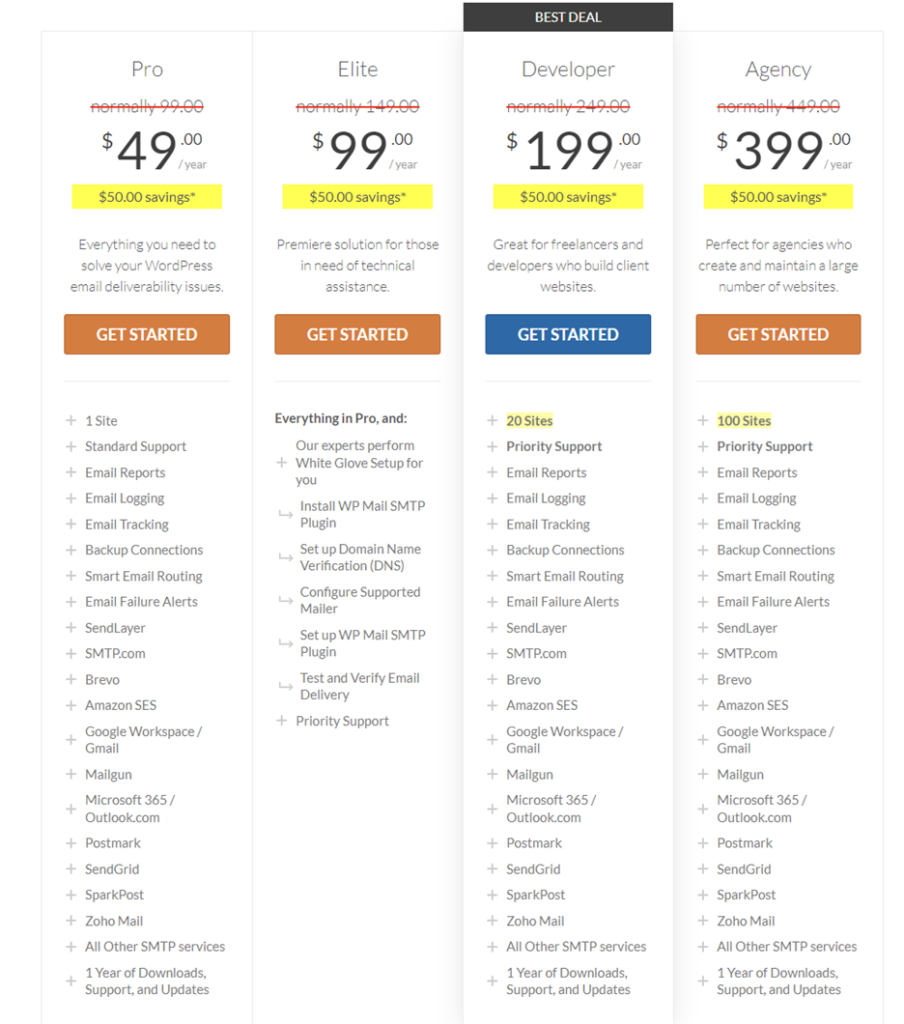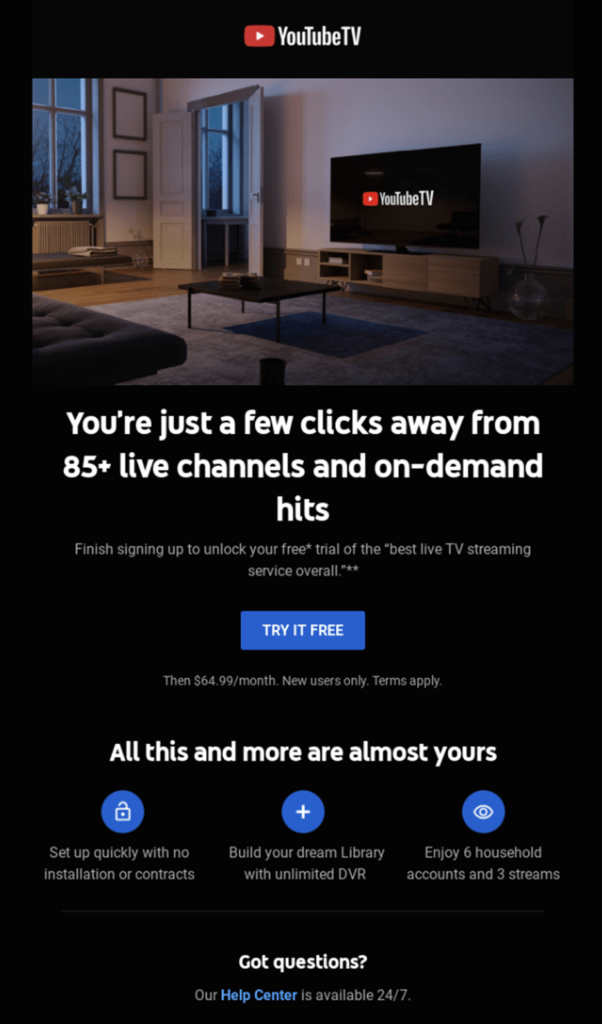One of the most important things you can do as a SaaS business owner is to make it easy for customers to switch subscription plans.
If you’ve been in business for longer than a few months, you know customer’s needs change over time. Brands just like yours should adapt to your audience, or there’s a good chance they will cancel their subscription.
Don’t believe me? Consider this: As of 2022, users are canceling subscriptions for good twice as quickly as they are starting new ones. This is due to industry saturation, economic struggles, and other factors that are likely out of your control.
I’ve found that removing roadblocks and making it easy for people to switch subscriptions is an excellent way to reduce churn while boosting revenue and customer satisfaction.
Today, I’m going to share some of the benefits of offering multiple subscription plans and show you 7 practical tips for making switching plans a breeze for your audience.
Let’s dive in!
Benefits of Making it Easy to Switch
There are plenty of reasons why you should make it easy for customers to switch plans. Before I show you exactly how to streamline this process on your website, let’s look at a few key benefits that you should know:
- Reduce Customer Churn – Churn represents the number of people who stop using your service versus how many customers you have in total. When people can effortlessly switch plans, they’re more likely to stick with your site. This matters for several reasons, but notably, it costs 6-7 times more to attract new customers versus retaining existing users.
- Build Loyalty – People are more likely to become long-term customers and trust your business when you give them the freedom and flexibility to control their experience.
- Increase Engagement – When people are happy with their subscription, they’re more likely to engage with your business through other marketing channels like email and social media. This means you’ll have more opportunities to gather feedback and meet their needs in the future.
- Boost Sales – If your customers have options to upgrade, you’ll see a big boost in profits. Similarly, offering downgrades will help you salvage potential cancellations, which also results in more sales.
7 Ways to Make it Easy for Customers to Switch Subscription Plans
Now that you understand how making it easy for customers to switch can help you and your audience, it’s time to take a look at 7 actionable strategies that you can use to make it happen on your website.
1. Show Plans and Features on a Chart
A simple yet effective way to make switching plans easy is to display all the options on an easy-to-read chart. Be sure to list each plan, its main features, and pricing side by side so people can compare at a glance.
Here’s an example of what this strategy looks like in practice:
Seeing the plans presented visually in one place eliminates confusion and helps customers choose the right option for their needs. I suggest highlighting the most important differences between plans, like the number of profiles, storage limits, integrations, and advanced features.
If someone already has a plan, you may want to consider highlighting the one they have and letting them know which option is best based on how they use your product.
It’s also important to make it easy to upgrade from this screen. For example, you may want to put a call-to-action that reads “upgrade now” next to the plan that suits your audience’s needs.
2. Educate with FAQs
Another way to win over customers is to add an FAQ section to relevant parts of your website. We like to include FAQs on our product pages and blogs. This makes critical information immediately available to customers when they need it most.
Imagine you’re thinking of upgrading your existing Hulu subscription, but you don’t know what you get for an extra $12.99 a month. Would you get the upgrade, or would you look for answers?
If you’re like most people, the answer is YES! You want to know why you’re paying an extra $120+ every year. Odds are, you’d be more willing to make the switch if there were a neatly organized FAQ section directly on the subscription page.
The questions you answer will depend on your industry and what specific product you offer to your audience. My suggestion is to review feedback, customer service conversations, and relevant Google searches to find good questions and answers to include on this part of your site.
3. Give a Prorated Discount
Prorated discounts are essential for convincing users to change their subscription, especially if their plan isn’t set to expire anytime soon. Basically, this means people can get back what they spent on their current plan if they switch to a different tier.
For example, Let’s say a customer buys a base-level plan for $50, only to realize the same day they could actually benefit from the pro plan that costs $75. In this case, you’d want to give them the full value of the month they already paid toward the upgrade, which means they would only need to pay $25 to upgrade.
Since this doesn’t usually happen on the first day of a subscription, you can calculate the prorated cost by dividing the monthly fee by the number of days. So, if they were halfway through the month, you could apply $25 (half of the initial monthly cost) toward their new subscription.
Prorating really is a win-win situation. Customers feel like they’re getting a good deal by not paying twice for the same time period. And for you, it means customers are more likely to upgrade on the spot rather than wait until their current cycle ends.
4. Notify Customers Towards the End of Their Subscription
While it’s true that some people change their subscription in the middle of their contract, many will refuse to take action until their current plan expires. The best thing you can do to turn these people into repeat customers – and get them to upgrade – is by notifying them when their subscription is coming to an end.
This scenario is the perfect opportunity to invite users to upgrade based on how they’ve used your product so far. For example, if you have a social media scheduling tool and the customer is always at max posts, you could suggest that they switch to a plan that gives them more room to post.
Not only is this a good way to boost sales, but it also shows users that you’re paying attention to their needs and want them to have the best experience possible.
It’s also worth mentioning that this level of personalization is known to spark engagement and build trust. Research shows that 80% of people prefer to engage with businesses that personalize offers based on their needs.
I highly recommend using email marketing for this step since personalized emails result in 6x more transactions than generic messages.
5. Let People Try It Before They Buy It
I’ve found that letting people try different subscriptions before they commit is an excellent way to get more people to switch plans. This seemingly simple gesture allows customers to experience the benefits for themselves, which will result in some taking action.
Below is an example of an email that YouTube sometimes sends to its premium subscribers. The idea is they want them to try YouTubeTV to see if it’s a good addition to their existing plan. Users can buy this option without getting premium. However, premium users are more likely to find value in the trial and upgrade. The “new users only” note applies to people who are new to YouTubeTV.
The trial you choose for your product will vary. Some brands offer 14 days, others go with 7, and some give their audience an “unlimited” trial, but they can’t save any of their work until they upgrade.
Once it gets close to the end of the trial period, reach out and ask users if they have any questions. This is a low-pressure way to show customers what they stand to gain by switching to an upgraded subscription.
6. Encourage Self-Service
Offering a self-service tool on your website or app where customers can instantly switch plans, add or remove features, and update billing info in just a few clicks is crucial for your success as a subscription-based business.
People do not like jumping through hoops to make simple changes. By giving your customers the freedom and flexibility to do what works for them, they have a frictionless way to explore their options, which means there’s a good chance they’ll decide to upgrade.
You can also use AI-powered chatbots in combination with a resource hub to help users if they have specific questions about the different subscription levels. This is a great way to help people with common inquiries since bots can quickly answer 24/7.
7. But Make it Easy to Reach Your Support Team
Self-service options are great, but you shouldn’t forget the importance of having an attentive customer support team. For context, only 34% of retail customers would like to talk to a chatbot instead of a live person.
I suggest making it as easy as possible for people to contact your business if they have questions or concerns, especially as it relates to their subscriptions. You don’t want to risk losing out on potential sales and customer loyalty by not being there when they need you.
I suggest establishing email, social media, and on-site support channels so people can reach you in a way that’s comfortable and convenient for them. If you can, it’s also a good idea to have phone support for people who would rather talk to someone about their options instead of type.
People are far more likely to change their plans if they can talk to a real person about their needs. Make sure to train your representatives how to help customers find the plan that works best for them by asking the right questions, practicing active listening, and only making suggestions that they think will be best for the person on the other end of the conversation.
Final Thoughts
There you have it! The seven strategies outlined here today have helped us create a smooth and effective system for customers who want to switch plans. These tips also help us educate users on their options so they can find the subscription that meets their needs.
Don’t be afraid to experiment and see what works best for your audience. The key is to make switching plans as intuitive and user-friendly as possible. The end result is a win-win situation for you and your customers.
Author Bio

Syed Balkhi is the founder of WPBeginner, the largest free WordPress resource site. With over 10 years of experience, he’s the leading WordPress expert in the industry. You can learn more about Syed and his portfolio of companies by following him on his social media networks.







